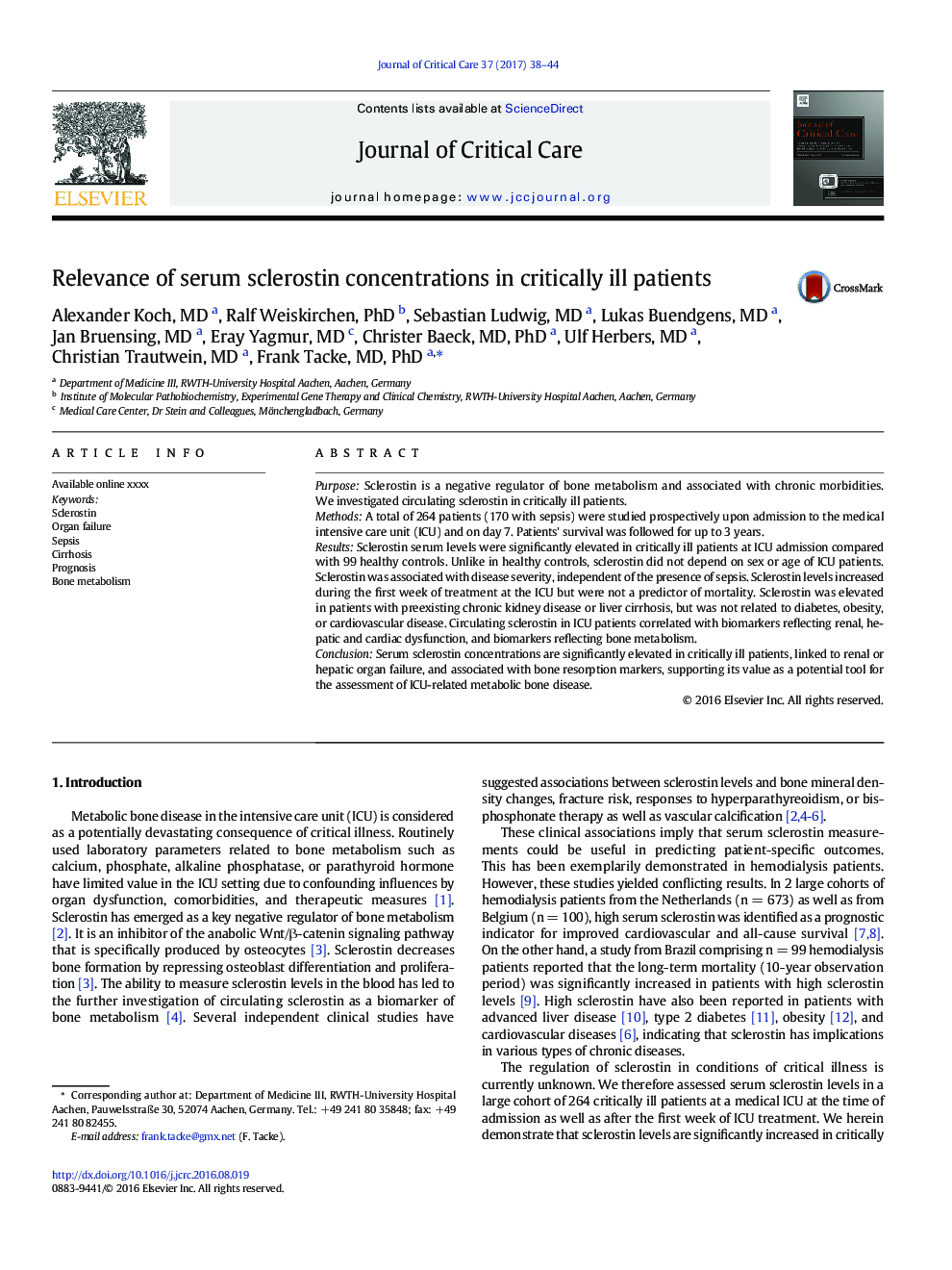| Article ID | Journal | Published Year | Pages | File Type |
|---|---|---|---|---|
| 2764294 | Journal of Critical Care | 2017 | 7 Pages |
PurposeSclerostin is a negative regulator of bone metabolism and associated with chronic morbidities. We investigated circulating sclerostin in critically ill patients.MethodsA total of 264 patients (170 with sepsis) were studied prospectively upon admission to the medical intensive care unit (ICU) and on day 7. Patients' survival was followed for up to 3 years.ResultsSclerostin serum levels were significantly elevated in critically ill patients at ICU admission compared with 99 healthy controls. Unlike in healthy controls, sclerostin did not depend on sex or age of ICU patients. Sclerostin was associated with disease severity, independent of the presence of sepsis. Sclerostin levels increased during the first week of treatment at the ICU but were not a predictor of mortality. Sclerostin was elevated in patients with preexisting chronic kidney disease or liver cirrhosis, but was not related to diabetes, obesity, or cardiovascular disease. Circulating sclerostin in ICU patients correlated with biomarkers reflecting renal, hepatic and cardiac dysfunction, and biomarkers reflecting bone metabolism.ConclusionSerum sclerostin concentrations are significantly elevated in critically ill patients, linked to renal or hepatic organ failure, and associated with bone resorption markers, supporting its value as a potential tool for the assessment of ICU-related metabolic bone disease.
